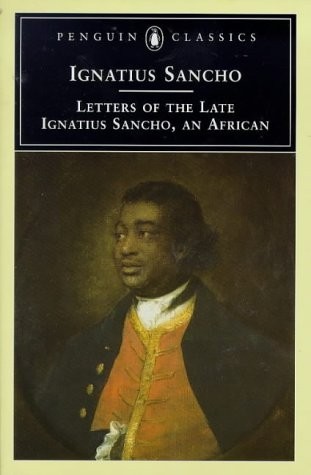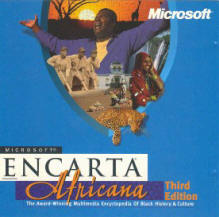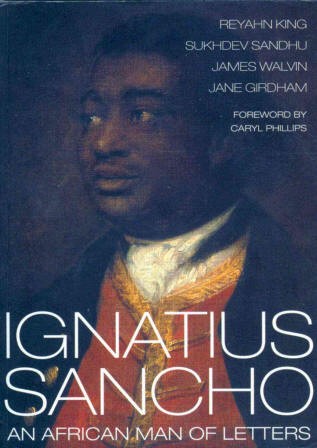Home
Blog
Composers
Musicians
Black History
Audio
About Us
Links
Composers:
Adams, H. Leslie
Akpabot, Samuel Ekpe
Alberga, Eleanor
Bonds, Margaret Allison
Brouwer, Leo
Burleigh, Henry Thacker
Coleridge-Taylor, Samuel
Cunningham, Arthur
Dawson, William Levi
Dede, Edmund
Dett, R. Nathaniel
Elie, Justin
Ellington, Edward K. "Duke"
Euba, Akin
Garcia, José Mauricio Nunes
Hailstork, Adolphus C.
Holland, Justin
Jeanty, Occide
Johnson, James Price
Joplin, Scott
Kay, Ulysses Simpson
Khumalo, Mzilikazi
Lambert, Charles Lucien, Sr.
Lambert, Lucien-Leon G., Jr.
Lamothe, Ludovic
Leon, Tania
Moerane, Michael Mosoeu
Perkinson, Coleridge-Taylor
Pradel, Alain Pierre
Price, Florence Beatrice Smith
Racine, Julio
Roldan, Amadeo
Saint-Georges, Le Chevalier de
Sancho, Ignatius
Smith, Hale
Smith, Irene Britton
Sowande, Fela
Still, William Grant
Walker, George Theophilus
White, José Silvestre
Williams. Julius Penson
AfriClassical Blog
Companion to AfriClassical.com
Guest Book
William J. Zick, Webmaster,
wzick@ameritech.net
©
Copyright 2006-2022
William J. Zick
All rights reserved for all content of AfriClassical.com

Letters of the Late Ignatius Sancho, an African
Ignatius Sancho
Vincent Carreta, Editor
Penguin Books (1998)

Microsoft Encarta Africana Encyclopedia, 3rd Edition
|
Home ->
Composers -> Sancho, Ignatius
Français
1 Birth
Ignatius Sancho
(1729-1780) was an African composer and author who grew up as a
house slave in an aristocratic household in Greenwich, England.
He writes in one of his published letters that he was born in
Africa. For over 200 years, the generally accepted version of
his birth and early life was that found in Joseph Jekyll's brief
biography,
Life of
Ignatius Sancho,
published in 1782.
The book pictured above is Ignatius Sancho: An
African Man of Letters. It was written by Reyahn King,
Sukhdev Sandhu, James Walvin and Jane Girdham, and was published
by the National Portrait Gallery of Great Britain (1997).
2 Biography
Joseph
Jekyll
writes that Ignatius Sancho was born on a British slave ship off
the coast of Guinea, West Africa en route to the Spanish West
Indies. He tells us the child's mother died shortly after giving
birth, and his father committed suicide to avoid a life of
plantation slavery. He further says the child was baptized by
the Bishop of Cartagena, in what is now Colombia, was taken to
England, and was given to three sisters who shared a home in
Greenwich. Jekyll gives a detailed account of the youth's
domestic service, his self-education with the assistance of
books provided by a neighbor, the Duke of Montagu, his
emancipation and subsequent employment in the Montagu household.
3 Brycchan Carey
Dr.
Brycchan Carey of London's Kingston University has published "The
extraordinary Negro": Ignatius Sancho, Joseph Jekyll, and the
Problem of Biography',
British Journal for
Eighteenth-Century Studies,
26, 2 (Spring 2003), 1-13. His website on Sancho is
http://www.brycchancarey.com/index.htm It reproduces the
complete text of Joseph Jekyll's
Life of Sancho.
Dr. Carey writes, in part:
|
The major problem with Jekyll's
Life of Ignatius
Sancho
is that much of it is unverifiable, and, worse still,
much of it directly contradicts what Sancho himself says
to people in his letters. For example, although Jekyll
tells us that Sancho was born on a slave ship, Sancho
himself seems convinced that he was born in Africa. For
a more detailed reading of Jekyll's
Life of Ignatius
Sancho,
see my article...that shows that Sancho was almost
certainly not born on a slave ship. |
4 Black
Domestics
Chapter 3 of the Sancho biography is by James Walvin and is
entitled Ignatius
Sancho: The man and his times.
Walvin writes:
|
This
was the period when fashion decreed the use of black
domestics, both enslaved and free. In the homes of
wealthy Londoners, fashionable spas and stately homes,
black pages or servants were commonplace, a fact amply
confirmed in any number of 18th Century portraits.
|
5 Montagu
Family
We do not know exactly how Sancho left the household in which he
was raised, but research has documented his subsequent
connection with the Montagu household. Walvin describes Sancho's
new life:
|
There,
working as a butler, he flourished, reading voraciously,
writing prose, poetry and music. He became an avid
theatre-goer and a fan of Garrick and became a figure in
fashionable London society - friendly with actors,
painters and, most interestingly with Laurence Sterne.
|
6
Marriage
Sancho married Anne Osborne, a West Indian woman of African
descent, in 1758. They eventually had six children. The cover
portrait of the Sancho biography was done by the renowned
British painter Thomas Gainsborough in 1768. Walvin indicates
that Sancho had become a man of letters by that time:
|
By the
late 1760s Sancho had made the progression from being a
decorative black domestic to a man of refinement and
accomplishment, penning letters to friends and
sympathisers around the country. |
7
Shopkeeper
Sancho became chronically ill with gout, and had difficulty
fulfilling his duties as a butler. The Montagu family provided a
small amount of money which enabled Sancho to leave domestic
service and buy a little grocery shop in Westminster, London in
1773. The city had about 20,000 such shops at the time, selling
such staples as sugar, tea and tobacco. Walvin notes the irony
of Sancho's sale of products connected with slavery:
|
As
Sancho tended to his counter and customers - taking tea
with favoured or famous clients - his wife Anne worked
in the background, breaking down the sugar loaves into
the smaller parcels and packets required for everyday
use. Slave-grown sugar, repackaged and sold by black
residents of London, themselves descendants of slaves -
here was a scene rich in the realities and the symbolism
of Britain's slave-based empire. |
8
Voter
Sancho's shop in Westminster was modest in size, yet it received
a steady stream of customers who sought his advice and company
as well as his goods. Walvin relates:
|
Among
the prominent visitors to Sancho's shop was Charles
James Fox, leader of contemporary parliamentary radicals.
We know that Sancho voted for Fox at the 1780 election,
having acquired the right to vote by his property rights
as a shopkeeper in Westminster. From what we know of
Sancho's views, it is not surprising that he voted for
Fox, but it is surely remarkable that at the high
watermark of British slavery a black should cast a vote
in a British election. |
9
Correspondence
Sancho is best known for the numerous letters he exchanged with
a variety of people throughout Britain. A common theme was his
moral outrage at slavery. Walvin elaborates:
|
In the decade
before his death in late 1780, Sancho, now in his
forties, became an inveterate letter-writer. He had made
earlier attempts at writing, but his subsequent
reputation was founded in the letters he penned in the
1770s. |
Among his
most prominent correspondents was Laurence Sterne, the British
author and country pastor who wrote the novel
The Life and Opinions of
Tristram Shandy.
The work was published in nine volumes over a period of ten
years, beginning in 1759. It includes many references to
intellectuals and authors. Sancho first wrote to Sterne in
response to his strong condemnation of slavery in the novel.
10 Letter to Sterne
The sentimental style
of the period is on full display in these excerpts from Sancho's
initial letter to Laurence Sterne. Sancho told the novelist that
he had read of opposition to slavery in the work of only one
author other than Sterne, Sir George Ellison:
|
REVEREND SIR,
IT
would be an insult on your humanity (or perhaps look
like it) to apologize for the liberty I am taking.—I am
one of those people whom the vulgar and illiberal call "Negurs."—The
first part of my life was rather unlucky, as I was
placed in a family who judged ignorance the best and
only security for obedience.—A little reading and
writing I got by unwearied application.—The latter part
of my life has been—thro' God's blessing, truly
fortunate, having spent it in the service of one of the
best families in the kingdom.—My chief pleasure has been
books.—Philanthropy I adore.
...
In your tenth discourse, page seventy-eight, in
the second volume—is this very affecting passage—"Consider
how great a part of our species—in all ages down to this—have
been trod under the feet of cruel and capricious tyrants,
who would neither hear their cries, nor pity their
distresses.—Consider slavery—what it is—how bitter a
draught—and how many millions are made to drink it!"—Of
all my favorite authors, not one has drawn a tear in
favor of my miserable black brethren—excepting yourself,
and the humane author of Sir George Ellison.
—I
think you will forgive me;—I am sure you will applaud me
for beseeching you to give one half-hour's attention to
slavery, as it is at this
day practised in our West Indies.—That subject, handled
in your striking manner, would ease the yoke (perhaps)
of many—but if only of one—Gracious God!—what a feast to
a benevolent heart! |
11 Black
Britons
Sancho vigorously opposed slavery in British colonies, but he
also painted a stark picture of the African community in Britain
itself, a result of the slave trade. In his chapter of
Ignatius Sancho: An African
Man of Letters,
Sukhdev
Sandhu paraphrases Sancho's account of a family excursion by
boat to New Spring Gardens:
|
The London mob
often treated foreigners with contempt. On their way
home from the Gardens, the Sanchos 'were gazed at –
followed, &c. &c. - but not much abused.' |
12
Death
Sancho continued to correspond with his friends during his
long struggle with gout. He finally died in London on December
14, 1780. His letters were published as a book in 1782, with Jekyll's Life of Sancho
used as a
Preface. Letters of the Late Ignatius Sancho, An African
quickly became a bestseller. We learn from Dr. Brycchan Carey:
|
Sancho's son,
William, added a long footnote to this biography in the
1803 edition. |
13
Slavery Exhibit
Late in 2007, London's Museum in Docklands announced “London,
Sugar & Slavery” a permanent exhibit to commemorate the 200-year
Anniversary of Britain's Abolition Act:
|
On 10 November 2007,
Museum in Docklands will open the only permanent gallery
in London to examine the city’s involvement in
transatlantic slavery and its legacy on the capital.
...
London, Sugar &
Slavery
will show it was not just a few evangelical
parliamentarians who abolished the transatlantic slave
trade, but a widespread grass roots movement that
included people freed from enslavement who wrote about
their experiences, thousands of ordinary citizens who
lobbied collectively and women who campaigned with their
purses by boycotting sugar that had been produced by
enslaved Africans. |
14 African Voices
The
blog Sierra Eye elaborated on this idea on the opening day of
the exhibit, listing Ignatius Sancho among those Africans who
made themselves heard in opposition to slavery:
|
The Buxton table, at
which the terms of the Abolition Act were hammered out,
will be on display. But the gallery will debunk the myth
that abolition was achieved by a few evangelical
parliamentarians. Olaudah Equiano, Ottobah Cugoano,
Ignatius Sancho, Phillis Wheatley and Mary Prince, are
amongst those African voices whose eloquent testimony
were crucial to forcing change. London, Sugar & Slavery
acknowledges enslaved Africans as the prime agents of
resistance. |
15
Black Musicians
Chapter 4 of the Sancho biography was written by Jane Girdham
and is entitled Black Musicians in England: Ignatius Sancho
and His Contemporaries. Girdham mentions some of the other
musicians of African descent who were prominent in Britain
during Sancho's era. They include the British violinist George
Augustus Polgreen Bridgetower (1778-1860) and Joseph Boulogne,
Le Chevalier de Saint-Georges (1745-1799), born on a French
plantation in the Caribbean. Both are featured on their own
pages in this Web site.
16 Legacy
Girdham points out that Sancho was much better known for his
letters than for his musical activities. She quotes Dr.
Josephine Wright's description of Sancho's works which have
survived to today:
|
Ignatius Sancho was one of the few Africans in
18th-century England to become a member of the middle
class, highly literate and an amateur musician and
composer. He was recognised in his lifetime as a man of
cultivated taste in various artistic areas, but his
legacy of four volumes of published music provides
virtually our only information about his musical
activities.
...
Sancho's surviving music consists of one set of songs
and three sets of dances, all published over roughly a
twelve-year period between 1767 and 1779, and totalling
62 short compositions (Wright, 1981, pp. 3-62). |
Because of his
amateur status, Sancho paid the costs of printing his music
himself. Girdham finds his songs to be among Sancho's "most
appealing" pieces. She explains they were written in the
"galant" style which was fashionable at the time. The songs
include settings of poems by Shakespeare, Anacreon and David
Garrick. Garrick was a friend whom Girdham describes as "the
most famous actor of his time" and the owner of the Theatre
Royal Drury Lane. Girdham closes her chapter with this
observation:
|
Although Sancho always remembered that his was an
adopted culture, his musical compositions are some of
the best proof of his assimilation into that culture. |
17 Renaissance Man
The
American scholar Josephine B. Wright edited
Ignatius Sancho (1729-1780),
An Early African Composer in England: The Collected Editions of
His Music in Facsimile, Garland
Publishing, Inc. (1981). A 15-page introduction provides
extensive historical context as well as analysis. Dr.
Wright calls Sancho "a Renaissance man":
|
In
addition to black performers, there were to be found in
Georgian England black composers. One early African
composer who lived in that country was Ignatius Sancho
(1729-1780), a Renaissance man of learning and
apparently the first black musician to publish his
music. This volume is devoted to his biography and a
study of his musical compositions. An investigation of Sancho's music is long overdue in light of the
composer's historical significance as a black
intellectual of the eighteenth century and the increased
public interest in African and Afro-American history.
...
He was conversant with the writings of Voltaire, the
abolitionist literature of Sterne and Sharp, as well as
with the poetry of his contemporary, the Afro-American
slave Phyllis Wheatley (ca. 1753-1784). |
18 Songs
In her Introduction to
Sancho's music, Josephine Wright critiques the volume entitled
A Collection of New Songs:
|
Of the
published volumes, A Collection of New Songs
is perhaps Sancho's
most interesting. These songs were published
originally for soprano voice with keyboard accompaniment.
But the compositions are decidely suitable for any voice
type, and may be easily transposed into various keys for
this purpose.
In general, Sancho
adheres to simple binary-strophic forms with contrasting
A and B sections.
Only
one song, "Take, Oh Take Those Lips Away," is
through-composed. The average length of the songs
is from twenty-four to forty-two measures. |
19 Significance
Though Ignatius Sancho was
only a skilled amateur composer, Josephine Wright stresses the
historical significance of his music:
|
There
can be no pretense that the music of Ignatius Sancho
equals that of the leading composers of his day.
But his musical compositions reveal the hand of a
knowledgeable, capable amateur who wrote in miniature
forms in an early Classic style. His compositions
are of great historical significance in understanding
the roots and origins of a classical tradition among
black musicians in the Western hemisphere. His
published music records the achievements of one black
composer from the eighteenth century who was active at a
time when most persons of African descent were chained
by the bonds of slavery on both sides of the Atlantic. |
This page was last updated
on
March 5, 2022
|



